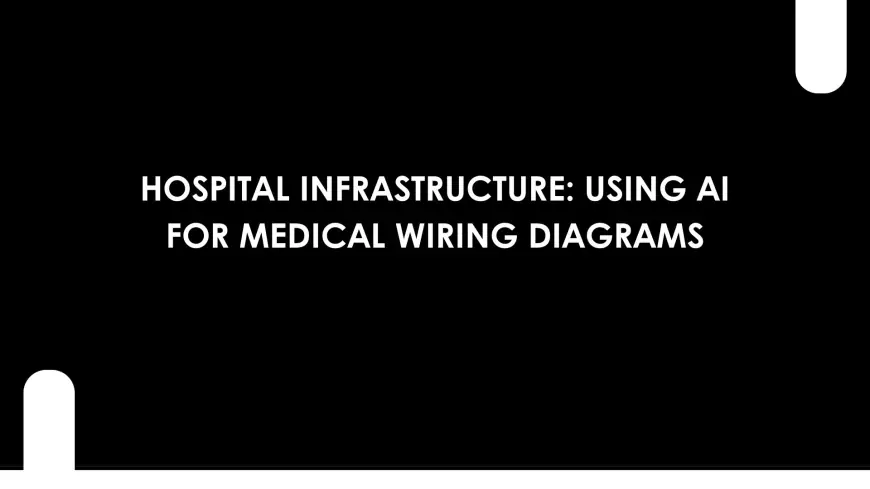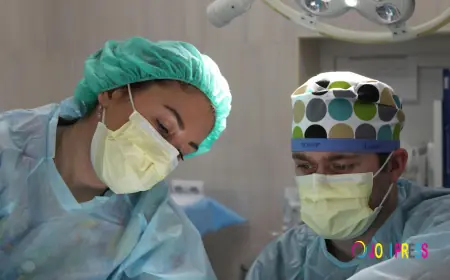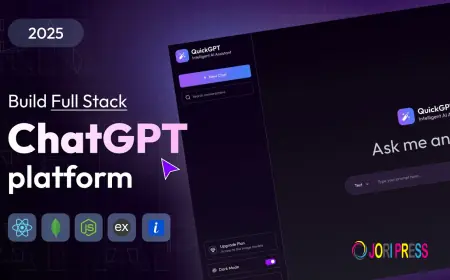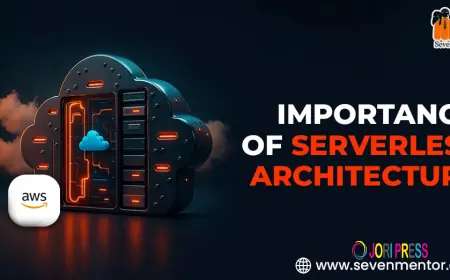Hospital Infrastructure: Using AI for Medical Wiring Diagrams
In this blog, we explore how AI is transforming medical wiring diagram creation and why hospitals and healthcare facility designers are adopting intelligent design solutions to meet rising demands.

Modern hospitals rely on a vast network of electrical and low-voltage systems to support critical patient care, diagnostics, communication, and life-saving equipment. From nurse call systems to surgical suite lighting, and from emergency power to HVAC controls, the complexity of wiring diagrams in a hospital is unlike any other environment. Every connection must be clear, reliable, and code-compliant—because lives depend on it.
Designing these intricate wiring systems manually can be time-consuming and prone to human error. That is why artificial intelligence is becoming an essential tool in the healthcare infrastructure space. With smart platforms like XTEN-AV, engineering teams now have access to AI Schematic Drawing Tools that speed up design processes, enhance accuracy, and ensure safety and regulatory compliance in medical environments.
In this blog, we explore how AI is transforming medical wiring diagram creation and why hospitals and healthcare facility designers are adopting intelligent design solutions to meet rising demands.
XTEN-AV: Smart AV and Infrastructure Design for Healthcare
XTEN-AV is a trusted name in intelligent AV and system design. With its advanced AI Schematic Drawing Tools, the platform supports the creation of highly detailed wiring diagrams for complex environments—including healthcare infrastructure. Whether the project involves a hospital wing renovation, a new operating room suite, or a complete medical campus, XTEN-AV helps designers visualize, automate, and document intricate systems with speed and precision.
From initial layouts to compliance documentation, XTEN-AV's AI capabilities are streamlining how hospital wiring diagrams are designed, reviewed, and approved.
1. Complexity of Medical Wiring Diagrams
Hospitals operate 24/7 and depend on a network of mission-critical systems. The wiring diagrams must include and integrate a wide range of services:
-
Nurse call systems
-
Medical imaging and diagnostic equipment
-
Patient monitoring systems
-
Fire alarms and emergency alert systems
-
Backup power and UPS systems
-
Network infrastructure and data cabling
-
Audio-video systems for patient rooms and conference areas
-
Building automation and climate control
These systems require not only precise design but also complete separation of life-safety circuits from general wiring. AI tools help simplify the complexity by organizing connections logically, grouping systems into layers, and ensuring standards are met.
2. Fast-Tracking Hospital Design Projects
In the healthcare sector, delays can cost more than just time—they can disrupt patient care. AI schematic tools from XTEN-AV significantly speed up the design process by automating routine tasks and generating diagrams from high-level inputs.
Instead of manually drafting every circuit, engineers can:
-
Input functional requirements such as "connect all patient monitoring systems to the central nurse station"
-
Use drag-and-drop tools enhanced by AI logic
-
Auto-route wiring paths based on system types
-
Instantly update drawings when components are changed
This efficiency allows hospital infrastructure projects to move from concept to execution much faster than with traditional methods.
3. Ensuring Code Compliance in Healthcare Facilities
Medical environments are governed by strict electrical codes and health regulations, including NEC, NFPA 99, and specific regional standards. Manual design increases the risk of overlooking compliance issues—especially in large, complex projects.
XTEN-AV’s AI Schematic Drawing Tools help maintain compliance by:
-
Validating wiring paths based on code requirements
-
Checking grounding for medical-grade outlets and equipment
-
Ensuring isolation of life-safety circuits
-
Flagging overcurrent protection mismatches
-
Recommending compliant wire types and labeling
This built-in intelligence reduces the burden on engineers to manually cross-check every detail and increases confidence during inspections.
4. Layer-Based Organization for System Clarity
A key challenge in hospital wiring design is maintaining clarity across overlapping systems. For example, a single room may have lighting, power outlets, gas alarms, telemetry, and audio-video equipment. AI tools allow these systems to be organized into visual layers.
With XTEN-AV, designers can:
-
Assign layers to different system types (e.g., low-voltage, critical power, patient care, etc.)
-
Toggle visibility to focus on one system at a time
-
Prevent signal crossover or circuit conflicts
-
Auto-label connections for easier maintenance
This layer-based view reduces confusion, helps teams work in parallel, and improves long-term maintainability of infrastructure.
5. Rapid Revisions and System Scaling
Hospitals are dynamic spaces. A room designed as a general ward today might be upgraded to an intensive care unit next month. AI schematic tools enable quick modifications and easy scaling.
With XTEN-AV, changes such as:
-
Adding monitoring devices
-
Expanding power supply circuits
-
Upgrading AV systems in meeting rooms
-
Adding emergency lighting
…can be implemented in minutes, not hours. The system auto-updates related drawings, adjusts BOMs, and keeps documentation synchronized—ensuring that every stakeholder is working with the latest data.
6. Enhancing Collaboration Between Teams
Hospital construction and renovation projects involve multiple teams—architects, MEP engineers, IT consultants, medical equipment planners, and hospital administrators. Coordination is critical.
AI tools simplify collaboration by:
-
Storing schematics on the cloud for real-time access
-
Enabling multiple users to work on different sections of the same drawing
-
Allowing stakeholders to leave comments directly on diagrams
-
Automatically syncing changes across teams
XTEN-AV’s collaborative features ensure that every change is visible, traceable, and approved—reducing errors and misunderstandings.
7. Integration with BIM for Full Facility Planning
Hospitals are increasingly using Building Information Modeling (BIM) to plan and manage infrastructure. XTEN-AV’s intelligent tools can export schematics into BIM-compatible formats, allowing seamless integration of medical wiring diagrams into architectural and engineering plans.
This integration allows:
-
Realistic placement of devices in 3D models
-
Conflict detection with mechanical systems
-
Accurate cable routing in confined spaces
-
Coordination with HVAC, plumbing, and fire systems
With AI-enhanced tools, designers can visualize and resolve potential installation issues before they occur in the field.
8. Simplified Maintenance and Future Upgrades
Once a hospital is operational, maintenance teams rely on accurate and easy-to-read wiring diagrams to perform upgrades or troubleshoot issues. AI-generated schematics from XTEN-AV are:
-
Clearly labeled with device IDs, wire paths, and endpoints
-
Organized logically for quick reference
-
Linked to component data and manuals
-
Stored digitally for instant access from anywhere
This level of detail reduces downtime during maintenance and makes it easier to plan upgrades without disrupting patient care.
Conclusion
Hospitals are among the most demanding environments for system design, and precision in wiring diagrams is not optional—it is critical. The complexity, scale, and safety requirements of medical infrastructure demand smarter tools that can keep up.
XTEN-AV is setting a new standard in hospital design with its intelligent AI Schematic Drawing Tools. From accelerating project timelines to enhancing accuracy and ensuring compliance, these tools are transforming how designers approach healthcare projects.
In an era where healthcare facilities must be flexible, scalable, and highly reliable, AI is the key to delivering wiring diagrams that are not only technically sound but also easy to interpret, maintain, and upgrade. With XTEN-AV, hospital infrastructure design moves into a new generation—one where intelligence and efficiency come together to support better patient care.
Read more: https://squarespaceblog.com/ai-schematic-drawing-for-renewable-energy-systems/
What's Your Reaction?
 Like
0
Like
0
 Dislike
0
Dislike
0
 Love
0
Love
0
 Funny
0
Funny
0
 Angry
0
Angry
0
 Sad
0
Sad
0
 Wow
0
Wow
0



















































